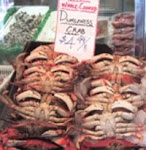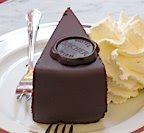
"Among college-educated adults,
the audience for live jazz has shrunk significantly,
to 14.9% in 2008 from 19.4% in 1982."
(from the National Endowment for the Arts’ latest Survey of Public Participation in the Arts,
the fourth to be conducted by the NEA
in participation with the U.S. Census Bureau since 1982.)
THE OLD FOLKS AT A JAZZ CONCERT.
A few weeks ago we went to hear songwriter, producer and keyboardist Dave Grusin (75) and his brother Don (68), also a superb piano player, in a Santa Fe jazz concert.
Dave created the original score and provided the piano music for one of the finest jazz films available, "The Fabulous Baker Boys." The soundtrack DVD is a big disappointment. It does not contain any of the brilliant improvisational piano playing that makes the movie so wonderful. What you liked about the movie isn't on the soundtrack! To "hear" what I'm saying, rent the film or buy it ASAP. It's that good. The reason I bring this up is that Dave and Don got to "noodling" on their twin pianos at this concert, late at night, just like in the film score, at the magnificent Lensic Theatre in SFe. And the audience would have remained with them as long as the two brothers kept playing.
Everybody in that rapt gray and white audience was listening. Unfortunately the theatre was only 3/4 full. Not enough people are listening to jazz.
The Wall Street Journal has always had excellent jazz coverage and in a recent posting, Terry Teachout writes that,"it’s no longer possible for head-in-the-sand types to pretend that the great American art form (jazz) is economically healthy or that its future looks anything other than bleak."
CAN JAZZ BE SAVED?
Terry Teachout is The Wall Street Journal's drama critic.
The versatile critic also wrote the libretto for the Santa Fe Opera's original production/adaptation of "The Letter". Remember the movie with Betty Davis.
Teachout is a big jazz fan and was interviewed on KSFR, the public radio jazz station in Santa Fe (FM101.1). His taste in jazz is very much main stream and classic but he observes in the August 9 edition of The Wall Street Journal:
"THE AUDIENCE FOR AMERICA'S GREAT ART FORM IS WITHERING AWAY"
By TERRY TEACHOUT
New York
"In 1987, Congress passed a joint resolution declaring jazz to be “a rare and valuable national treasure.” Nowadays the music of Louis Armstrong, Duke Ellington, Charlie Parker and Miles Davis is taught in public schools, heard on TV commercials and performed at prestigious venues such as New York’s Lincoln Center, which even runs its own nightclub, Dizzy’s Club Coca-Cola.
Here’s the catch: Nobody’s listening.
No, it’s not quite that bad—but it’s no longer possible for head-in-the-sand types to pretend that the great American art form is economically healthy or that its future looks anything other than bleak.
The bad news came from the National Endowment for the Arts’ latest Survey of Public Participation in the Arts, the fourth to be conducted by the NEA (in participation with the U.S. Census Bureau) since 1982. These are the findings that made jazz musicians sit up and take notice:
• In 2002, the year of the last survey, 10.8% of adult Americans attended at least one jazz performance. In 2008, that figure fell to 7.8%.
• Not only is the audience for jazz shrinking, but it’s growing older—fast. The median age of adults in America who attended a live jazz performance in 2008 was 46. In 1982 it was 29.
• Older people are also much less likely to attend jazz performances today than they were a few years ago. The percentage of Americans between the ages of 45 and 54 who attended a live jazz performance in 2008 was 9.8%. In 2002, it was 13.9%. That’s a 30% drop in attendance.
• Even among college-educated adults, the audience for live jazz has shrunk significantly, to 14.9% in 2008 from 19.4% in 1982.
These numbers indicate that the audience for jazz in America is both aging and shrinking at an alarming rate. What I find no less revealing, though, is that the median age of the jazz audience is now comparable to the ages for attendees of live performances of classical music (49 in 2008 vs. 40 in 1982), opera (48 in 2008 vs. 43 in 1982), nonmusical plays (47 in 2008 vs. 39 in 1982) and ballet (46 in 2008 vs. 37 in 1982). In 1982, by contrast, jazz fans were much younger than their high-culture counterparts.
What does this tell us? I suspect it means, among other things, that the average American now sees jazz as a form of high art. Nor should this come as a surprise to anyone, since most of the jazz musicians that I know feel pretty much the same way. They regard themselves as artists, not entertainers, masters of a musical language that is comparable in seriousness to classical music—and just as off-putting to pop-loving listeners who have no more use for Wynton Marsalis than they do for Felix Mendelssohn.
Jazz has changed greatly since the ’30s, when Louis Armstrong, one of the supreme musical geniuses of the 20th century, was also a pop star, a gravel-voiced crooner who made movies with Bing Crosby and Mae West and whose records sold by the truckload to fans who knew nothing about jazz except that Satchmo played and sang it. As late as the early ’50s, jazz was still for the most part a genuinely popular music, a utilitarian, song-based idiom to which ordinary people could dance if they felt like it. But by the ’60s, it had evolved into a challenging concert music whose complexities repelled many of the same youngsters who were falling hard for rock and soul. Yes, John Coltrane’s “A Love Supreme” sold very well for a jazz album in 1965—but most kids preferred “California Girls” and “The Tracks of My Tears,” and still do now that they have kids of their own.
Even if I could, I wouldn’t want to undo the transformation of jazz into a sophisticated art music. But there’s no sense in pretending that it didn’t happen, or that contemporary jazz is capable of appealing to the same kind of mass audience that thrilled to the big bands of the swing era. And it is precisely because jazz is now widely viewed as a high-culture art form that its makers must start to grapple with the same problems of presentation, marketing and audience development as do symphony orchestras, drama companies and art museums—a task that will be made all the more daunting by the fact that jazz is made for the most part by individuals, not established institutions with deep pockets.
No, I don’t know how to get young people to start listening to jazz again. But I do know this: Any symphony orchestra that thinks it can appeal to under-30 listeners by suggesting that they should like Schubert and Stravinsky has already lost the battle. If you’re marketing Schubert and Stravinsky to those listeners, you have no choice but to start from scratch and make the case for the beauty of their music to otherwise intelligent people who simply don’t take it for granted. By the same token, jazz musicians who want to keep their own equally beautiful music alive and well have got to start thinking hard about how to pitch it to young listeners—not next month, not next week, but right now."






Blaine,
ReplyDeleteI totally agree! First, Fabulous Baker Boys is one of my favorites (written by the amazing Steve Kloves, who now only adapts Harry Potter novels for the screen) and I was so let down by the soundtrack as well. Only two of Michelle Pfiefer's vocals were even on it.
As someone who is still somewhat "young", I love to go see live jazz. However, I also blame the venues in most American cities that book jazz acts. They are stuffy, "adult", and charge a fortune. I live in NYC, and most clubs here get it all wrong!
For me, the 100 Club in London (where I worked for a year) and most jazz clubs in New Orleans get it absolutely right in the atmosphere department...cheap, welcoming, casual, fun, dark, allow dancing when people feel so moved, no "gift shops", stay at your table as long as you want, etc. In New Orleans, you can drift in and out of great clubs all over the Quarter, sampling great jazz act one after the other.
We went to see Kurt Elling a few years ago at Birdland in NYC, and that was a perfect example of what NOT to do. We were ushered in at the last minute after waiting outside in a line (we had bought our tickets in advance), were given one chance to order an overpriced drink or awful snack type foods like chicken fingers. Elling was really amazing, but only played for 45 minutes, then our check was slapped on our table and we were told to leave promptly because another show was starting right away.
Now, if you're a young adult, or even a not-so-young adult, would you enjoy that?